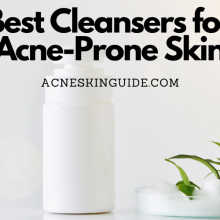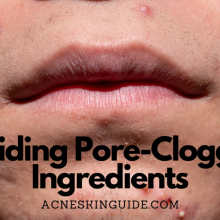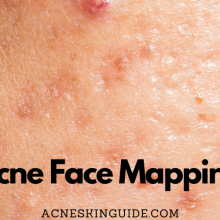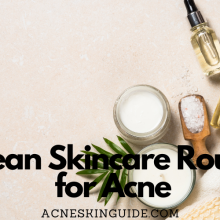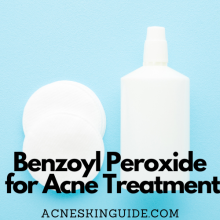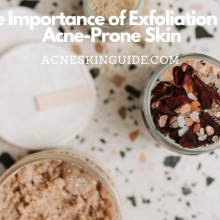Hydrocolloid Bandages For Acne Treatment – Do They Work? | AcneSkinGuide
Hydrocolloid Bandages For Acne Treatment
Hydrocolloid bandages, originally designed for wound care, have emerged as a potential acne treatment trend. These adhesive dressings absorb fluid and create a moist, healing environment. While not intended for acne, their ability to draw out pus and fluid from whiteheads and pimples can reduce inflammation and promote faster healing. Compared to traditional acne patches, hydrocolloid bandages may be more effective at absorption but lack acne-fighting ingredients.
Used properly by cleansing the area, applying the bandage, leaving it on briefly, and removing carefully, they can be a beneficial addition to an acne routine. However, they may cause irritation, are unsuitable for severe acne like cysts, and cannot fully replace medicated treatments. When used alongside other proven therapies under guidance, hydrocolloid bandages offer a valuable complementary option for managing certain types of acne blemishes.
Our Top 5 Recommended Acne Treatment Products

Acne Healing Power: Exploring the Benefits of Hydrocolloid Bandages
Acne is a common skin condition that affects millions of people worldwide, and the search for effective treatments is ongoing. While various topical creams, oral medications, and professional procedures are available, a new trend has emerged in recent years: using hydrocolloid bandages as an alternative to traditional acne patches.
What are Hydrocolloid Bandages?
Hydrocolloid bandages are adhesive dressings designed primarily for wound care. They contain gel-forming agents that absorb wound exudate and create a moist environment that promotes healing. Upon contact with fluids, these agents turn into a gel-like material, sealing the wound and protecting it from external contaminants.
The Science Behind Using Hydrocolloid Bandages for Acne
While hydrocolloid bandages were not initially intended for acne treatment, their unique properties make them a potential solution for certain types of acne lesions. Whiteheads and pimples that have come to a head and contain fluid or pus are particularly well-suited for hydrocolloid treatment.
The primary benefit of using hydrocolloid bandages for acne is their ability to absorb excess fluid and pus from these blemishes. By drawing out the fluid, they can reduce inflammation and promote faster healing. Additionally, the bandages create a protective barrier against further irritation, preventing the temptation to pick or pop the pimple, which can lead to scarring and spread the infection.
Effectiveness Compared to Regular Acne Patches
While traditional acne patches can be effective in reducing the appearance of blemishes, hydrocolloid bandages may offer an advantage in terms of absorption and healing. Since they are designed for wound care, they may be more effective at drawing out fluid and promoting the healing process.
However, it’s important to note that dedicated acne patches often contain additional acne-fighting ingredients, such as salicylic acid or tea tree oil, which can help combat bacteria and reduce inflammation. Additionally, some acne patches are designed specifically for different types of blemishes, such as whiteheads or cystic acne, which may make them better suited for certain situations.
How to Use Hydrocolloid Acne Patches
Before applying a hydrocolloid bandage to a pimple, it’s crucial to properly cleanse the area and allow it to dry completely. This will ensure optimal adhesion and prevent the introduction of additional bacteria.
Next, choose a bandage size that is slightly larger than the blemish you’re treating. Gently apply the bandage, ensuring that it adheres well to the skin around the pimple.
Leave the hydrocolloid bandage on for several hours or overnight, allowing it to absorb the fluid from the pimple. Resist the temptation to check or remove the bandage frequently, as this can disrupt the healing process and introduce new bacteria.
When it’s time to remove the bandage, do so carefully. Avoid pulling or tugging, as this can cause the pimple to rupture and potentially spread the infection.
Top Recommended Hydrocolloid Bandages for Acne
While there are specialized acne patch brands that use hydrocolloid technology, such as Cosrx and Peach Slices, traditional hydrocolloid bandages from brands like Band-Aid, Curad, and Nexcare can also be effective and more affordable.
When choosing a hydrocolloid bandage for acne treatment, consider factors like size (to ensure a proper fit for different blemishes), absorbency (to effectively draw out fluid), and breathability (to prevent excessive moisture buildup and potential irritation).
Potential Drawbacks and Precautions
While generally safe, hydrocolloid bandages may cause skin irritation or allergic reactions in some individuals. It’s always recommended to do a patch test before using them on a larger area or for an extended period.
Improper use or leaving the bandages on for too long can also trap bacteria and potentially spread the infection. Follow the recommended usage guidelines and remove the bandages as soon as they have absorbed the fluid from the pimple.
Additionally, hydrocolloid bandages are not recommended for certain types of acne, such as cystic or nodular lesions. These deeper, more severe forms of acne may require different treatments or professional intervention.
Conclusion
Hydrocolloid bandages can be a useful addition to your acne treatment routine, offering benefits like fluid absorption, protection, and faster healing for certain types of blemishes. However, it’s important to understand their proper use, limitations, and effectiveness compared to other acne treatments to achieve the best results.
While they may not be a one-size-fits-all solution, hydrocolloid bandages can be a valuable tool in your acne management arsenal, especially when used in conjunction with other proven treatments and under the guidance of a dermatologist or skincare professional.
Remember, everyone’s skin is different, and what works for one person may not work for another. It’s essential to experiment with different options and find the combination of treatments that works best for your unique skin concerns.
FAQs and Answers
Can hydrocolloid bandages be used on all types of acne, including cystic and hormonal acne?
No, hydrocolloid bandages are generally not recommended for use on all types of acne, particularly cystic and hormonal acne.
Hydrocolloid bandages work best on surface-level acne like whiteheads, pustules, and pimples that have come to a head with fluid or pus. This is because their primary mechanism of action is absorbing and drawing out that excess fluid from the blemish.
However, cystic acne and hormonal acne often involve deeper, inflamed nodules or cysts under the skin’s surface. These types of acne lesions do not have exposed fluid or pus that can be absorbed by the hydrocolloid dressing. Trying to use hydrocolloid bandages on cystic or hormonal acne may be ineffective and could potentially trap bacteria, leading to further inflammation or infection.
For cystic and hormonal acne, it is better to use treatments recommended by a dermatologist, such as:
- Topical retinoids
- Oral contraceptives (for hormonal acne)
- Oral antibiotics
- Corticosteroid injections (for large, inflamed cysts)
So in summary, while hydrocolloid bandages can be a useful tool for some surface acne, they are not meant to treat or recommended for more severe, deeper forms of acne like cystic or hormonal breakouts. Proper professional guidance is advised for managing those acne types.
How do hydrocolloid bandages compare to other acne spot treatments like benzoyl peroxide or salicylic acid in terms of effectiveness?
Hydrocolloid bandages work quite differently from traditional acne spot treatments like benzoyl peroxide or salicylic acid, so it’s difficult to directly compare their effectiveness. Here’s a breakdown:
Benzoyl Peroxide and Salicylic Acid:
- These are topical medications that treat acne by reducing bacteria and unclogging pores
- Benzoyl peroxide kills acne-causing bacteria
- Salicylic acid is a beta-hydroxy acid that exfoliates and unclogs pores
- They work best on non-inflammatory acne like blackheads and whiteheads
- They can help dry out pimples but don’t physically extract pus/fluid
Hydrocolloid Bandages:
- Not medicated, their key function is absorbing fluid from pimples
- Most effective on pimples that have already formed a white head with pus
- Don’t have anti-bacterial or exfoliating properties
- Provide a protective barrier once fluid is absorbed
- May help reduce inflammation and promote faster healing
So in terms of treating different acne stages effectively:
- Benzoyl peroxide and salicylic acid are better for preventing new breakouts
- Hydrocolloid bandages are better for treating existing pimples with a head
Many dermatologists recommend using a combination approach – using benzoyl peroxide/salicylic acid daily, then applying a hydrocolloid patch once a pimple forms to absorb fluid and protect the area.
Overall, hydrocolloid bandages can be a helpful complementary treatment, but may not replace the bacteria-fighting abilities of traditional medicated acne spot treatments fully. Using them together is often most effective.
Is it safe to use hydrocolloid bandages on the face for an extended period, or can it clog pores and cause more breakouts?
It’s generally not recommended to use hydrocolloid bandages on the face for an extended period of time, as there is a risk of clogging pores and causing more breakouts.
Here are a few key points about extended use of hydrocolloid bandages on the face:
- Limited breathability
While hydrocolloid bandages are designed to create a moist, sealed environment for wound healing, this same occlusive nature can potentially clog pores when used on the face for too long. Pores need some air exposure to breathe and shed dead skin cells properly. - Buildup of skin cells/oils
As the bandages absorb fluid from pimples, they can also trap shed skin cells, excess oil, dirt and bacteria against the skin over time. This buildup provides an environment that acne-causing bacteria can thrive in. - Spread of acne bacteria
Improper removal of hydrocolloid bandages may lead to the spread of acne-causing bacteria to other areas of the face.
Most dermatologists advise only using hydrocolloid bandages overnight or for a maximum of 12-24 hours at a time on the face. Leaving them on for multiple days increases the likelihood of clogged pores and new breakouts forming.
If using hydrocolloid bandages, it’s important to thoroughly cleanse the area before reapplying a fresh bandage. Using them sparingly and not covering too large an area at once is also advisable.
For extended acne treatment, leave-on medicated spot treatments or prescribed creams are usually a better option than occlusive bandages. But hydrocolloid can provide overnight spot relief when used properly.
For individuals with sensitive skin, are there any precautions or potential side effects to be aware of when using hydrocolloid bandages for acne?
For individuals with sensitive skin, there are some important precautions and potential side effects to be aware of when using hydrocolloid bandages for acne treatment:
- Skin Irritation/Allergic Reactions
The adhesive materials and ingredients in hydrocolloid bandages can potentially cause skin irritation, redness, itching or allergic reactions in those with sensitive skin. It’s recommended to do a patch test on a small area first before applying the bandages more widely. - Excessive Moisture Build-Up
While hydrocolloid bandages are meant to create a moist environment, for sensitive skin this excessive moisture can potentially lead to maceration (excessive softening of the skin) or even fungal infections if left on too long. - Difficulty Removing Bandages
The adhesive on hydrocolloid bandages can strongly adhere to the skin, especially if left on for extended periods. Improper or forceful removal can potentially tear or damage sensitive skin. - Residue Left Behind
Some hydrocolloid bandage formulas may leave behind an adhesive residue that could further clog pores or irritate sensitive skin if not properly cleansed after removal.
To minimize potential side effects, those with sensitive skin should:
- Do a patch test first
- Only use bandages for short durations (12 hours max)
- Gently remove bandages by rolling/lifting slowly
- Thoroughly cleanse the area after removal
- Use unscented, hypoallergenic hydrocolloid bandage formulas
It’s also advisable to consult a dermatologist, as they may recommend avoiding hydrocolloid bandages altogether for those with extremely sensitive skin conditions like eczema or rosacea where the occlusion could exacerbate issues.
Can hydrocolloid bandages help prevent acne scarring, or are they only effective for treating active breakouts?
Hydrocolloid bandages can potentially help reduce the risk of acne scarring, but they are primarily effective for treating active acne breakouts rather than preventing scarring.
Here’s a breakdown of how hydrocolloid bandages may impact acne scarring:
Treating Active Breakouts:
The main benefit of hydrocolloid bandages is their ability to absorb fluid and pus from pimples, whiteheads, and pustules. By drawing out this excess fluid, they can reduce inflammation and promote faster healing of the acne lesion. Faster healing time means less opportunity for skin picking or further trauma that can lead to scarring.
Protection from Skin Picking:
Hydrocolloid bandages form a protective barrier over the blemish, which can deter people from picking, popping, or aggressively squeezing active pimples. This prevents additional skin injury that often contributes to scarring.
However, hydrocolloid bandages do not directly treat or prevent acne scars once they have formed. Their effects are limited to the active breakout stage.
For existing acne scars, treatments like chemical peels, laser resurfacing, microneedling, or dermal fillers are more effective options. These help remodel the scarred skin tissue.
So in summary:
- Hydrocolloid bandages are highly useful for treating active inflammatory acne lesions
- By reducing inflammation and preventing skin picking, they may indirectly lower the risk of new acne scars developing
- But they do not directly treat or remove existing acne scars
- A comprehensive acne treatment plan combining hydrocolloid bandages with other scar treatments may be most effective
Proper preventative skin care and prompt treatment of breakouts using methods like hydrocolloid bandages give you the best chance of avoiding acne scars in the first place. But additional treatments are needed for scarring that has already occurred.

